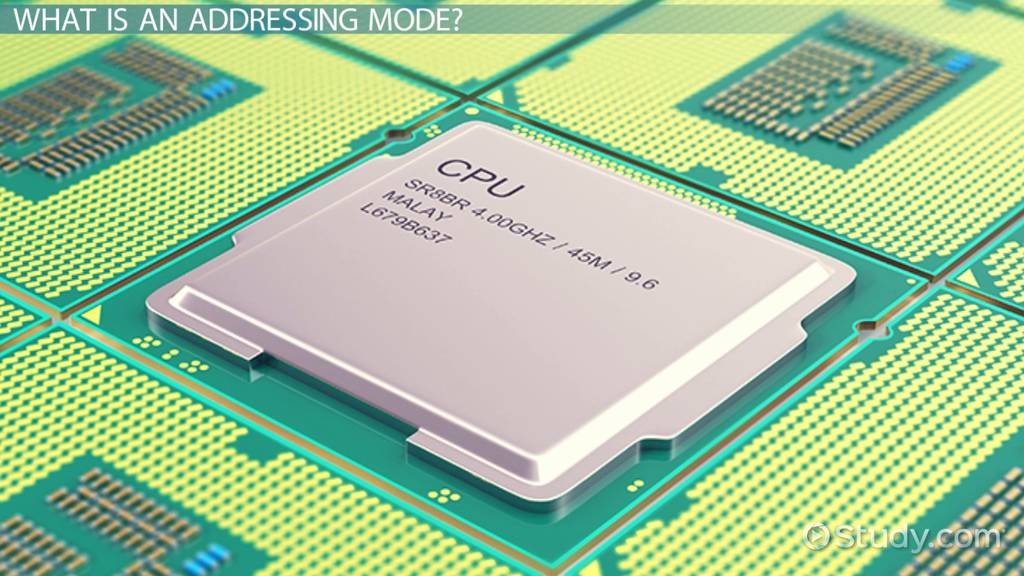Memory Accessing Mode - Computer System?
Category: COMPUTER SCIENCE | 13th March 2024, Wednesday

Memory Accessing Modes Refer To The Techniques Or Methods Used By A Computer's Central Processing Unit (CPU) To Access Data From Memory. These Modes Determine How The CPU Interacts With The Memory Hierarchy, Including Cache, Main Memory (RAM), And Secondary Storage Devices Like Hard Drives Or SSDs.
Several Common Memory Accessing Modes Include:
-
Direct Access: In This Mode, Also Known As Random Access, The CPU Can Access Any Memory Location Directly Using Its Address. Each Memory Location Has A Unique Address, And The CPU Can Read From Or Write To Any Location Independently Of Others.
-
Sequential Access: In Contrast To Direct Access, Sequential Access Involves Accessing Memory Locations In A Sequential Manner. Data Is Accessed In A Predetermined Order, Typically Starting From The Beginning Of Memory And Proceeding Sequentially. This Mode Is Commonly Associated With Storage Devices Like Magnetic Tapes.
-
Indexed Access: Indexed Access Involves Using An Index Or Pointer To Access Specific Memory Locations Indirectly. Instead Of Directly Specifying The Memory Address, The CPU Refers To An Index That Points To The Desired Location. This Mode Is Often Used In Array Data Structures Or When Accessing Elements In Linked Lists.
-
Stack Access: Stack Access Follows A Last In, First Out (LIFO) Order, Where Data Is Pushed Onto And Popped Off A Stack. The CPU Accesses Data From The Top Of The Stack, Making It Useful For Managing Function Calls, Local Variables, And Other Temporary Data.
-
Caching: Caching Involves Storing Frequently Accessed Data In A Small, Fast Memory (cache) Located Closer To The CPU Than Main Memory. The CPU First Checks The Cache For The Required Data And Only Accesses Main Memory If The Data Is Not Present In The Cache. Caching Helps Improve Memory Access Speeds By Reducing The Time Needed To Retrieve Data From Slower Memory.
Different Memory Accessing Modes Offer Varying Trade-offs In Terms Of Speed, Complexity, And Efficiency, And The Choice Of Mode Depends On The Specific Requirements Of The Application And Hardware Architecture.
Direct Access Or Random Access
It Is The Type Of Accessing Mode In Which The Value To Be Stored In A Particular Memory Location Is Obtained Directly. Since The Data Can Be Accessed In Any Order That Is Why This Type Of Memory Access Is Also Known As Random Access Of Memory. This Type Of Memory Access Is Generally Fast And More Flexible. The Type To Be Stored In Memory Is Obtained Directly By Retrieving It From Another Memory Location. This Type Of Memory Access Is Based On The Principle That Any Piece Of Data Can Be Returned In A Constant Time, Regardless Of Its Physical Location And Previous Access. The Web Uses Direct Memory Access Mode.
Sequential Access Memory
It Is The Type Of Memory In Which The Stored Data Is Read In Sequence. That Means If You Want To Display The Fourth Record, The Reading Will Start From The First Record And Then Move To Second, Third And Then Fourth Record. This Type Of Memory Access Can Be Time Consuming And Hence Slow, Especially When The Data To Be Read Is Towards The End. Sequential Access Devices Are Generally A Form Of Magnetic Storage. Hard Disks, CD-ROMs And Magnetic Tapes Use Sequential Access Of Memory.
Tags:
Memory Accessing Modes, Accessing Modes, What Is Accessing Modes
